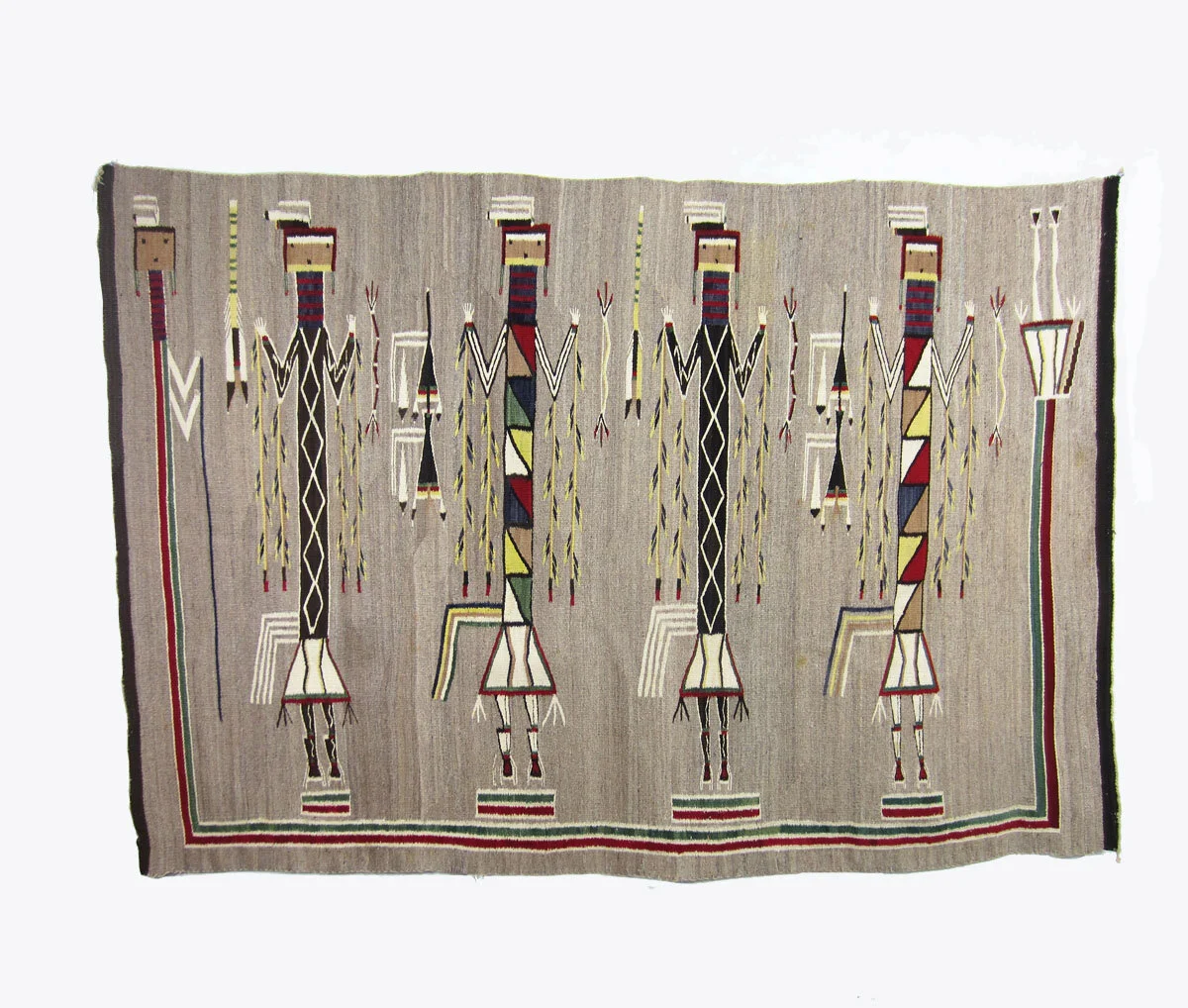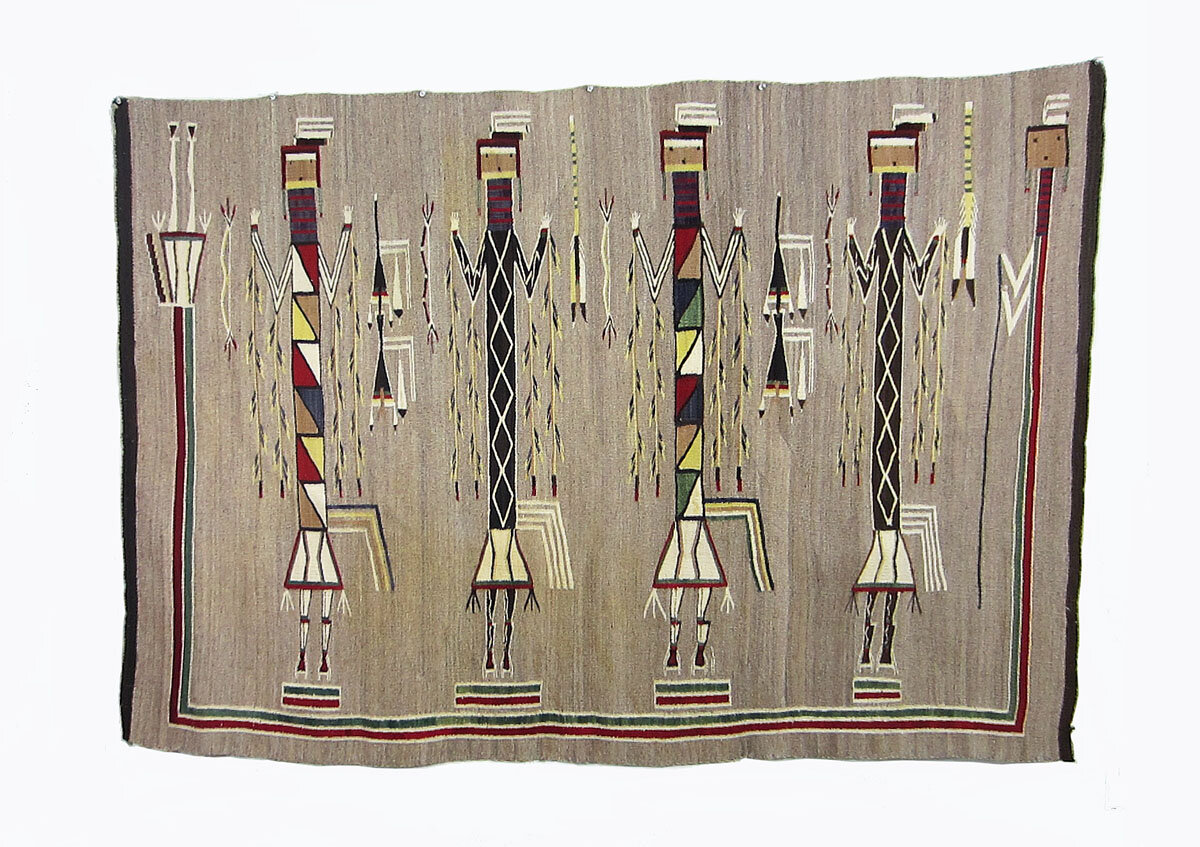Navajo (Dine') yei rug
Navajo (Dine') yei rug
78” wide x 54” high
handspun wool, natural and synthetic-dyed
excellent condition
ex: Charles Donaldson; Private Collection
circa 1930s
SOLD
The Navajo believe that people should live in balance with the natural world around them. Illness and other woes are an indication of a disruption in this harmony. To restore it, the traditional Navajo family hires a medicine man to perform a ceremony or ceremonies, often transpiring over many days. At the height of these ceremonies, the medicine man draws a very specific design in colored sand. We refer to these as "sand paintings". Afterward, the sands are disposed of ritually and the details of the designs remain confidential. Otherwise, the Navajo believe that harm will come to those who reveal these designs.
Trade in Navajo textiles to Anglos throughout the country blossomed when the railroads arrived in the Southwest in the 1880s. By the 1920s, it was well established. Collectors wanted ceremonial images represented in Navajo textiles but, of course, they were forbidden. There were a few weavers who took the risk, altering a few details but basically representing the general form of the designs. These textiles were woven in secrecy and the traders sold them discreetly.
What generally evolved was the use of generalized “holy people” depicted in the sandpaintings in textiles. These figures are known as “yei” or “Yeibichai”, dancers depicting the yei figures in ceremonies. The figures depicted in this rug are “yei” figures. They are protected by a rainbow spirit. These designs are not ceremonial in themselves and are therefore considered safe to weave and to own.








